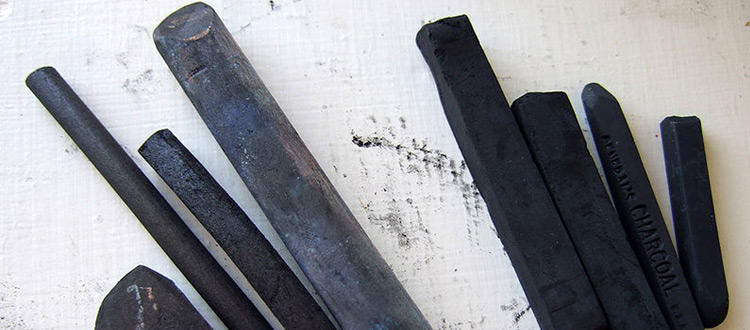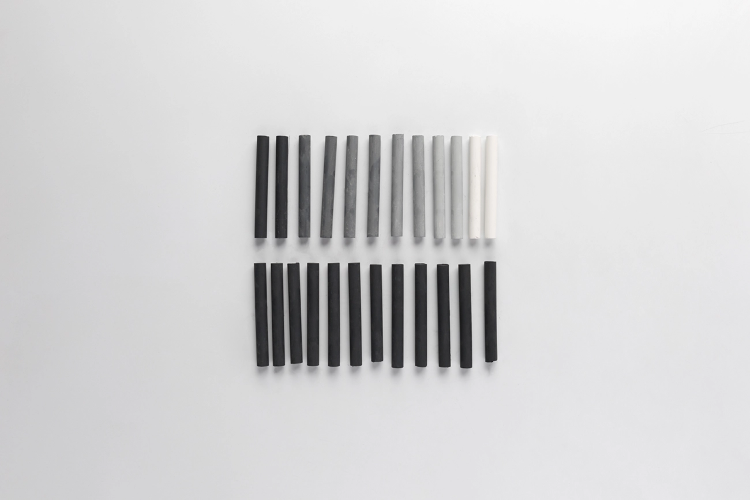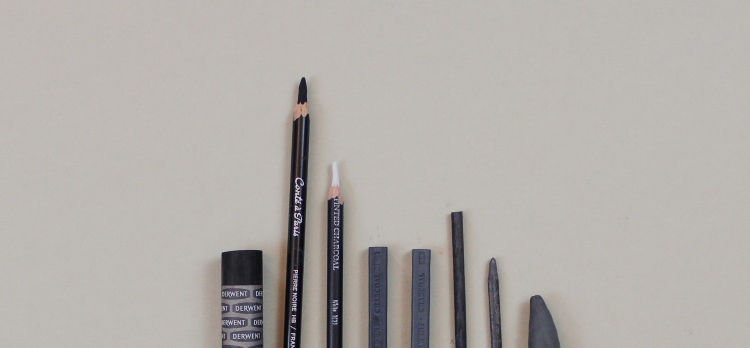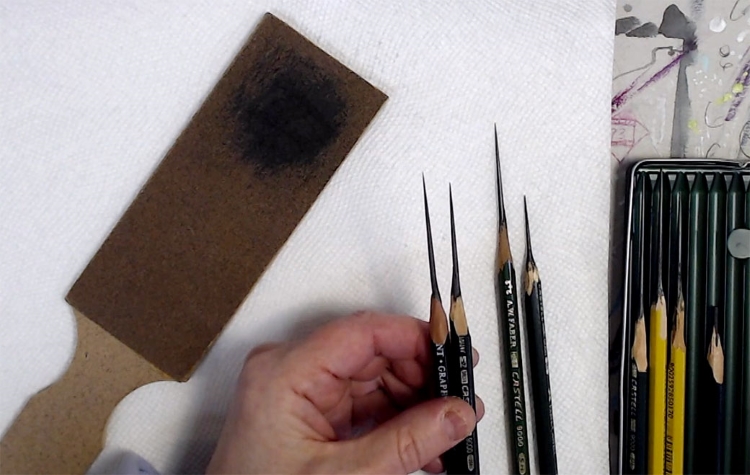Ask anyone who works in the creative field to name one important tool they can’t live without, and their answer will be a drawing pencil. It doesn’t matter if it’s a painter, sculptor, textile artist or craft hobbyist, a good art pencil is an essential part of any artist’s supply. The two most popular pencils for drawing are graphite and charcoal. Although they both look like pencils, they are totally different, which means they have different strengths and weaknesses.

Let’s take a look at how they compare, which is better for beginners and which one should you use for your projects.
Graphite Pencils
A type of carbon, graphite is the main component of the core in drawing pencils, along with a binder like clay. The more binder in the graphite-to-binder mixture, the harder the pencil lead will be, which means the thinner lines it will draw and the lighter values it will be able to achieve. Pencils with less binder and more graphite will be a lot softer, which means they will draw thicker lines, will be easier to blend and will allow you to create much darker values.
To indicate the hardness of the pencil lead, a combination of letters and numbers is used. This is how the full range of pencil grades looks like – spanning from lightest to darkest.

When looking to order pencils online, most graphite pencil kits you will find will range from 2H or HB to 6B. To give you an idea, the yellow No. 2 pencils used in schools are equivalent to an HB. For a wide range of values without weighting down your pencil box, you can order pencils HB – 6B. You definitely don’t need the entire range. These pencils are usually enough for most artists.
Graphite pencils draw better on smooth paper and are better suited for smaller drawings or quick sketches. Because you’ll be working with a tool that has a very small mark-making surface, it’s hard to cover a bigger area smoothly. Even though you can get woodless graphite pencils, you’ll be still confined to a fairly small mark making surface.
With that said, consider working on a paper that is 9 X 12 or smaller. Drawing with graphite pencils on larger paper can be frustrating and discouraging as you’ll have a really hard time getting the texture just right. With a 9X12 paper, it will also be easier to find picture frames to show off your work.

One possible downside of graphite pencils is that they can give a weird shine to the drawing, especially if you press really hard for darker values, and if you make a very large area while drawing over the graphite multiple times. To reduce glare in dark areas, you can layer your darkest pencil instead of just pressing harder. Note that this can take longer.
Charcoal Pencils
Like graphite, charcoal is a form of carbon. It’s made from burning wood until the resulting substance is the right consistency for drawing. Charcoal pencils come in soft, medium or hard consistency. The hardest charcoal will give you the lightest values while the darkest charcoal will give you the darkest value. Charcoal pencils are usually darker than even the darkest graphite. This allows you to get a wide range of values from the whitest white of the paper to extremely dark areas.

When it comes to the grading range for charcoal, it’s smaller than that of graphite and ranges from HB to 6B. You’ll find soft charcoal also much easier to work with because it spreads and blends easily, giving you nice, smooth coverage much like oil paint. It also erases more easily, making it more forgiving and suitable for beginners.
Charcoal works best on more textured paper. Because you can lay a stick on its side to cover a larger area at once, it is suitable for larger drawings too. To create highlights and lighten a value, you can use a kneaded eraser to lift some of the charcoal. However, getting super fine details with charcoal is hard because the mark-making surface is relatively large for a drawing tool. You should think of this medium more like painting than drawing.
Charcoal is also very smudgy, which means that it’s very easy to get fingerprints all over your piece if you aren’t careful. You can get it all over your hands and clothes, and if you don’t happen to have a fixative with you, you’re going to end up with a ruined smudged drawing.
What are the best art pencils will depend on your personal preference. As you can see, both art pencils are very different. While you can learn to master both, artists often choose a favourite as they get some experience with each of them. Consider trying both of them to find out which work best for you.

How to Sharpen Art Pencils?
To transform your pencil into the most effective drawing tool, you can sharpen them using a single, edge razor blade instead of a common pencil sharpener. Using an edge razor blade will allow you to create a more versatile and effective drawing tool and will help eliminate distractions and create a streamlined drawing process.
Although learning how to sharpen an art pencil with an edge razor blade may be challenging at first and will sure take practice, with care and dedication you will soon master it. And your new skill will be evident in the quality of your drawing.


















